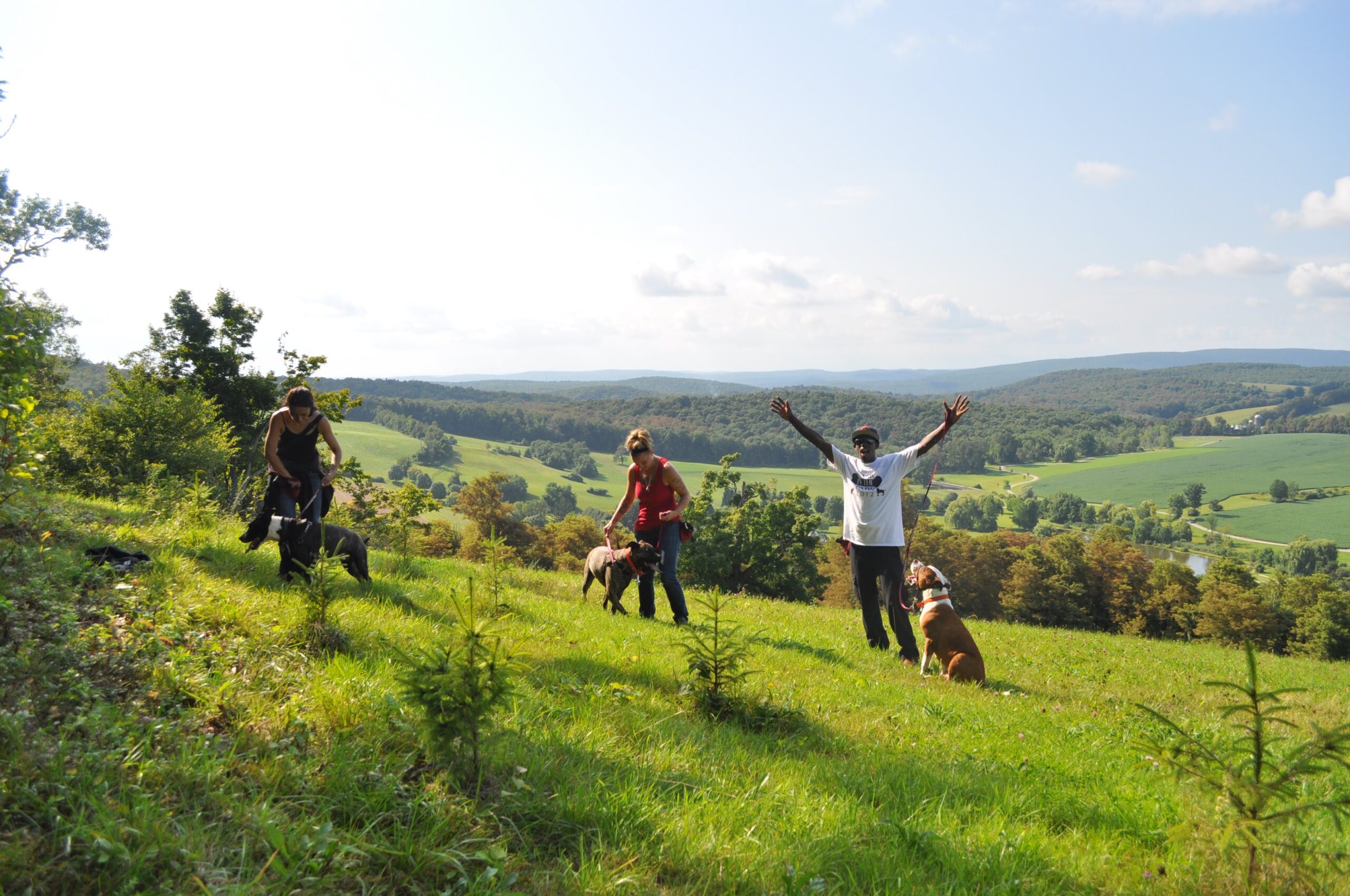This is a guest post from Kristen Auerbach, Deputy Chief Animal Services Officer at Austin Animal Center.
On any given day at Austin Animal Center, there are 300 or more dogs waiting for homes. On average, it takes between two weeks to a month for them to find homes. But some of them, through no fault of their own, are passed over time and time again. These dogs wait patiently, sometimes for months, to find their families. We call them ‘hidden gems’ and they’re most often perfectly adoptable, medium and large, adult dogs who fail to catch the eye of potential adopters.

Thor was one of those dogs. He came to our shelter as a stray who was friendly with other dogs and every person he met – yet, he didn’t find a family.
As the months passed, the stress of living in a cage for 23 hours a day started to get to Thor. He barked at everyone who passed by and stopped showing affection toward potential adopters. On his six month anniversary, we put him on our ‘at risk’ list due to his stress-related behaviors.
Without placement options, Thor could have been euthanized simply because he had no immediate place to go.

Luckily for Thor, Austin Animal Center has several safety nets in place for dogs like him. One of those safety nets is a foster program that gives dogs a break from the shelter environment. When Thor’s behavior declined, one of our volunteers offered to foster him. Once Thor was out of the shelter, he almost immediately returned to the happy-go-lucky, loving dog we’d met six months prior.
She snapped some photos and wrote about her experiences with him. Her story had a tremendous impact and Thor found a home within just a few days.
Thor’s new dad says he’s is the best dog he’s ever had. Thor would have never met his dad if a volunteer hadn’t saved his life by agreeing to foster him for a short time.

Thor’s story represents a common challenge animal shelters face – Dogs who come into the system as great pets, get passed over for no real reason, and eventually develop behavioral issues due to the stress of the shelter environment.
In shelters across the country, dogs like Thor are dying every day. For animal welfare workers and volunteers, watching them decline contributes significantly to compassion fatigue. For me, there is nothing sadder than seeing a dog that I know is a wonderful family pet grow increasingly depressed, withdrawn and/or anxious.

Today, more of these dogs are given as long as it takes to find a new home. The internet abounds with stories of shelter dogs adopted after two, five and even 15 years of living in an animal shelter. The fact that these dogs were allowed to live in the shelter until they could be adopted is something to celebrate, but we must ask the question: Why are these dogs sitting in a shelter so long in the first place? The answer is simply that, while there are tons of people who would gladly help a long stay dog by fostering, they simply don’t know that it’s an option.
Shelters don’t also realize that it’s an option or they’re intimidated about launching a program.
Here are a few basics tips to start your own foster program:
1. Combine Your Foster and Volunteer Programs
While you may need coordinators to manage both the foster and volunteer functions, there are many benefits to combining these programs. You can use the same manual and training process for both programs,. Plus, your volunteers, especially ones who regularly walk your dogs, are the ones most likely to foster your long stay dogs.
2. Develop Foster Outings.
Encourage staff, volunteers and fosters to take long stay dogs out of the shelter whenever they want. A quick trip for a hamburger or doggie ice cream cone or a getaway weekend crashing on a foster’s couch and being a ‘normal’ dog can have a positive impact on a dog’s behavior. Ask foster families to take photos and videos and share them on social media to help the dogs find a permanent home.

3. Do a Policy Check In
Are you putting in too many roadblocks to getting your long stay dogs to foster? Are there unnecessary restrictions and rules imposed on foster families? Review your existing policies and see if you’re creating barriers that discourage people from fostering. Remove any unnecessary restrictions.
Provide on-the-spot counseling to current volunteers, staff and fosters who want to take long stay dogs home. To ensure pets and people stay safe, we tell fosters and adopters everything we know about the dog and give them guidelines for the dog while in foster.
Make sure people know these dogs are available for foster or adoption. We place a sign on their kennel to indicate their availability.
Review your foster contract and foster training materials to make sure you’re setting clear expectations and rules to keep pets and people safe and your foster program successful.

4. Empower Volunteers
At AAC, we have an all-volunteer group called the Hard Luck Hounds, who find foster placement for our longest stay dogs. The group participates in exercise and enrichment programs for the dogs. Members also set up Facebook pages for each of the dogs. Starting a task force like this is invaluable for shelters who have limited time and resources.
5. Marketing Is Crucial
For long stay dogs, ongoing, consistent marketing is crucial to finding foster placement. Ask volunteers to take pictures and videos of long stay dogs whenever they take a long stay dog out for a kennel break and post those pictures on social media. Remember, to help all your shelter’s pets, including the longest stay dogs, keep marketing separate from adoption counseling.

6. Put Shelter-Based Behavioral Challenges in Context
Most long stay dogs come into the shelter as happy, healthy pets but may develop behavioral challenges from the stress of constant confinement. A recent study I conducted at the Fairfax County Animal Shelter showed that the behavior dogs demonstrate in the shelter did not match their behavior in a foster home.
Last year, we sent nearly 500 adult dogs to foster homes and our overall lifesaving rate for these dogs was greater than 96%. About 10% of these foster families became foster ‘failures’ – they made their foster dogs permanent family members.
If you’ve put together similar programs at your shelter, we’d love to hear about it. Tell us in the comments.






